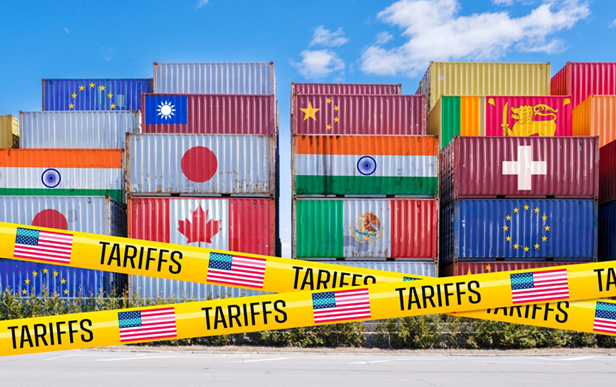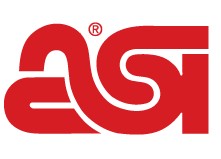News July 08, 2025
Trump Issues Executive Order Delaying Reciprocal Tariffs to August 1
The reciprocal tariffs announced April 2 were supposed to take effect this week. The president also sent letters to a handful of companies indicating new rates.
Key Takeaways
• New Enforcement Date: President Trump has extended the deadline for implementing reciprocal tariffs from July 9 to August 1, giving countries more time to negotiate trade deals.
• Adjusted Rates: The U.S. has issued updated reciprocal tariff rates to several countries, with some rates lowered (notably for Southeast Asian nations like Cambodia, Laos and Myanmar) and others increased (such as Japan and Malaysia).
• Fluid Situation: The administration signaled that tariff rates could still be modified up or down depending on bilateral relations.
President Trump issued an executive order on the morning of Tuesday, July 8, further extending the pause on the proposed reciprocal tariffs to August 1. The initial deadline on the 90-day pause was today, but the administration has given trading partners an additional three-and-a-half weeks to further negotiate trade deals.

“Since President Trump modified the tariff rates roughly 90 days ago, dozens of countries have agreed or offered to lower their tariff rates and eliminate non-tariff barriers to move toward a more balanced trade relationship with the United States,” read the executive order announcement. “While the United States is open to additional trade discussions and deals, President Trump is taking action to establish trade relations going forward.”
Along with the extended deadline, the Trump administration also sent letters to countries laying out their new reciprocal tariff rates beginning August 1. As the White House pointed out in its statement, some of these rates are lower than the ones initially announced on what Trump dubbed “Liberation Day,” April 2, and some are higher.
Eyes on Asia
The biggest decreases in tariff rates are mostly concentrated among Southeast Asian countries. For example, Cambodia’s reciprocal tariff rate declined 13 percentage points from the April 2 announced 49%, Laos by eight percentage points and Myanmar by four percentage points. The only two countries that saw increases were Japan and Malaysia – both increases of one percentage point to 25%.
Conspicuously missing from the list is Vietnam. Just last week, the president announced a trade deal with Vietnam, a primary trade partner especially in the apparel space, to place a 20% tariff on goods imported from Vietnam, as well as a 40% tariff on “transshipped” products from other countries that make their way to the U.S. via Vietnam. That deal, however, hasn’t been formally announced, so it may still be in the negotiation phase. The White House said that more countries will receive letters in “the coming days and weeks.”
Bangladesh and Cambodia, two countries from which the U.S. commonly imports apparel and textiles, are subject now to a 35% and 36% tariff, respectively. For Cambodia, that’s a steep drop from the 49% in place in April, and a 2% decrease for Bangladesh. Indonesia’s rate remained the same at 32%.
Three of the countries that received letters are among the most popular sourcing destinations for promotional products: Bangladesh, Thailand and Indonesia. Among suppliers who import, 11% do so from Bangladesh, 9% from Thailand and 7% from Indonesia.
Subject to Change
According to CNBC, the letters sent from the Trump administration added that the U.S. would “perhaps” consider lessening those tariff rates for affected countries.
“These tariffs may be modified, upward or downward, depending on our relationship with your Country,” the letter said. “You will never be disappointed with the United States of America.”
1 in 10
The number of suppliers who import products from Bangladesh (among those who import), making it the fifth-most popular sourcing hub for promotional products.
(Counselor 2025 State of the Industry)
Additionally, the letters stated that if any of these countries raise their own tariffs on American goods, the U.S. would add that same percentage to the current tariff rate.
When asked whether this new deadline of August 1 was “firm,” the president was noncommittal.
“I would say firm, but not 100% firm,” President Trump said at the White House Monday evening, according to Yahoo. “If they call up and say they would like to do something a different way, we’re going to be open to that.”
The president did, however, take to Truth Social to say that “There has been no change to this date, and there will be no change.”
The president also posted on social media that countries aligning with the policies of BRICS – the economic bloc of Brazil, Russia, India, China, South Africa, Egypt, Ethiopia, Indonesia, Iran and United Arab Emirates, viewed as a competitor of the G7 bloc and has been pushing for less reliance on the U.S. dollar as a global reserve currency – would be hit with an additional 10% tariff.
The Situation With China
These reciprocal tariff changes do not include China, arguably the Trump administration’s most prominent sparring partner in the trade war. In June, the administration confirmed it would maintain the current tariff structure on Chinese imports, meaning most products imported by promo companies remain subject to a 55% total rate – a 30% tariff introduced earlier this year, combined with 25% tariffs still in place from the first Trump administration. (It wasn’t clear if China’s role in BRICS would garner an additional 10% hike.)
“The clarity around the China tariff policy gives buyers and sellers alike a long-overdue roadmap,” Jake Himelstein, president of Counselor Top 40 distributor BAMKO (asi/131431) and a member of Counselor’s Power 50 list of the promo products industry’s most influential people, told ASI Media in June. “Yes, prices may go up, but confidence in pricing and sourcing decisions is far better than the paralysis that comes from not knowing what’s next.”
The situation may be different for businesses who source in other countries besides China, as the rates may change in the coming weeks through trade agreements or shifting rates promised and implemented by the U.S. government.
